Unless otherwise noted the detailed information about the site and the objects found there, comes from the archeological site of Olympia and its accompanying museum.
Olympia was a famous sanctuary of Zeus located in the Peloponnese. Its fame is no doubt connected to the Olympic games but we can see traces of prehistoric habitation in the excavations. A visible remain of a prehistoric structure (2150 -2000 BCE). In the 1908 excavations a number of such prehistoric buildings were unearthed. They had stone foundations and one part of the building was rounded like an apse.
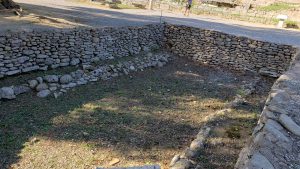
A visible example of the prehistoric buildings at the site.

Model of prehistoric site
Zeus was the dominant God in the sanctuary of Olympia. Evidence that the site was connected with the worship of Zeus from the 10th century BCE is found through about 6000 objects excavated from the site. These were dedications buried in the ashes around the altar of Zeus. In the thick layer of ash that formed around it, archeologists have found votive offerings of clay and bronze figures by the faithful.
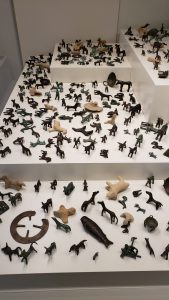
The offerings found in the thick layer of ash dated from the 10th through the 7th century BCE
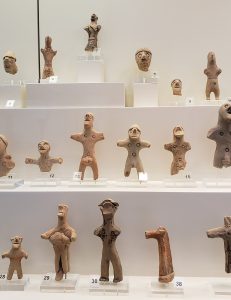
Figures found are generally male (clay and bronze) from 10th to 7th BCE.
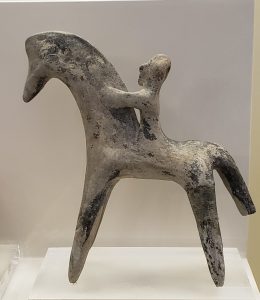
Female figurine on a horse from 8th BCE . There are very few female figurines.

Tripods were also found in the area. Tripods connected with hearth and fire so home. Were given as prizes in games Homeric epics. The cauldrons could be used to keep oils and other stuff so we find many cauldron offerings at Olympia.
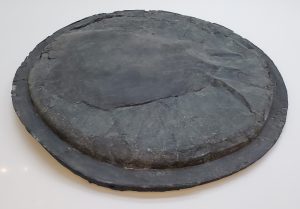
From 700 BCE the spoils of war were dedicated in the sanctuary. These have a military and political message as they declare a victory over a rival. This site had a reputed oracle that dealt with military questions and its fame was far and wide in the Hellenic world.
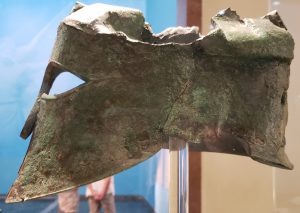
Miltiades Helmet after the Battle of Marathon as a dedication to Zeus.

The Corinthian Helmets dedicated to Zeus from the 8th through 6th centuries.
The model of the site in the 1st century as depicted in the brochure is linked here https://ancient-greece.org/archaeology/olympia.html
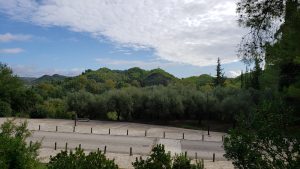
The current surrounding of the site.
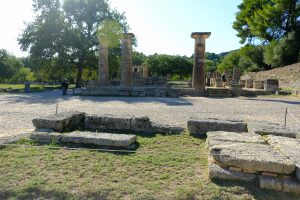
The Remains of the temple of Hera (end of 7th century BCE). This is the oldest temple in the sanctuary. A Doric temple with a peripteral of 6 columns on the narrow side and 16 on the long side. According to legend the disc of the sacred truce was kept here. The area is front is where the current Olympic flame is lit.
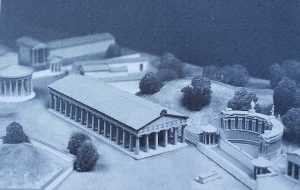
Model of the temple of Hera
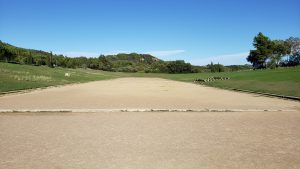
This is the stadium from the 5th century BCE. The starting and end lines are marked with stones. The stones in the grass are for judges and on the opposite hillside is the altar to Demeter where her priestess sat.
